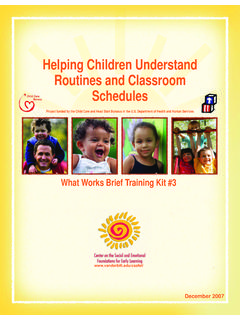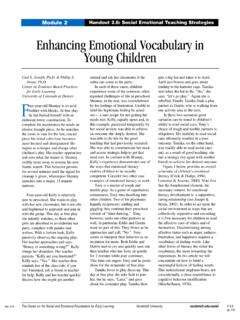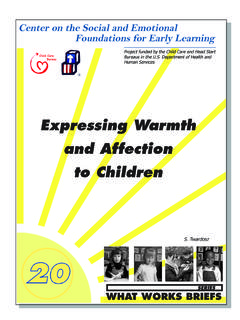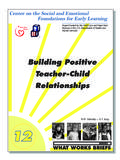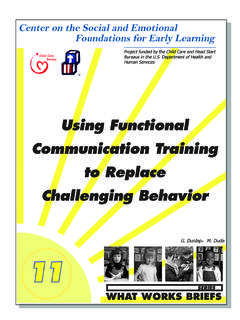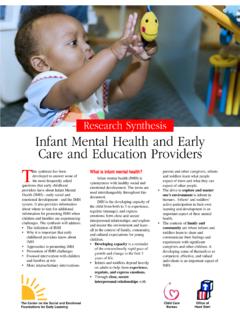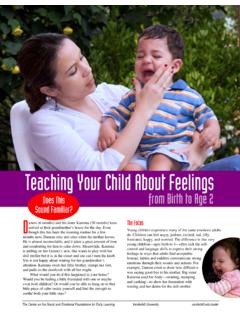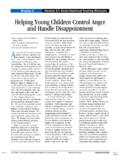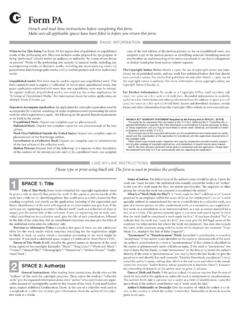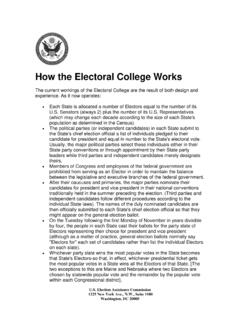Transcription of Helping Children Express Their Wants and Needs
1 Center on the Social and EmotionalFoundations for Early LearningHelping ChildrenExpress TheirWants and NeedsProject funded by the Child Care and Head StartBureaus in the Department of Health andHuman ServicesWHAT WORKS BRIEFSSERIESM. M. Ostrosky M. L. Hemmeter J. Murry G. CheathamUnderstanding the Relationship betweenCommunication and BehaviorCommunication is the process of exchanging meaning betweenindividuals by talking or using body language, gestures(pointing, reaching, or giving), facial expressions, jointattention (sharing attention, directing the attention of anotherperson, or following the attention of another person), andvocalizations (grunts and cries).
2 Children need to communicateto get materials, activities, attention, or assistance from are many types of communication disorders someinvolve difficulty in the area of receiving and understandinginformation while some include problems or delays inexpressing and articulating information. Children withcommunication delays often exhibit challenging behaviorswhen Their Needs are not met. Because of the Children s limitedcommunication skills, Their caregivers misinterpret or fail tonotice Their communication attempts. However, as childrenlearn to communicate better and caregivers learn to recognizeand respond to Children s communication, these challengingbehaviors often subside.
3 Behaviors that indicate that a childmight have communication problems include using a limitednumber of words, having difficulty understanding concepts inthe environment, having difficulty following directions, anddemonstrating frustration when trying to Children Express TheirWants and NeedsThis what Works Brief is part of a continuing series ofshort, easy-to-read, how to information packets ona variety of evidence-based practices, strategies, andintervention procedures. The Briefs are designed forin-service providers and others who conduct staffdevelopment activities.
4 Those who are responsible forprofessional development should find them useful insharing information with professionals and parents tohelp teachers and other caregivers support youngchildren s social and emotional development. TheAugust 2005 Robbie is an inquisitive 3-year-old boy with a wonder-ful smile. At home and school when he has difficultycommunicating with others, he sometimes uses challeng-ing behavior. Robbie s mother, preschool teacher, and thespeech-language pathologist met recently to discuss theirconcerns about Robbie s home, Robbie has trouble at dinnertime.
5 He oftenresists getting ready for mealtime because he does notwant to stop what he is doing. On days when he moreeasily leaves his previous activity to come to dinner, heskips important steps, such as washing his hands. Hismother is frustrated with his need for constant redirectionand prompting. At school, Ms. Mozie sees that whenBriefs include examples and vignettes that illustratehow practical strategies might be used in a variety ofearly childhood settings and home environments. Thestrategies described in the Briefs are most successfulwhen used in the context of ongoing positive relation-ships and supportive envirnments.
6 The strategies aremost successful for an individual child when developedbased on observation and assessment of the childincluding information from the family, teacher andother is upset, he exhibits challenging behavior,including hitting other Children during transitions andsnack. Ms. Mozie sees Robbie s and the other Children sfrustration but is unsure how to a parent-teacher conference, the three adultsdetermine that communication is at the heart of Robbie schallenging behaviors. Robbie seems to have difficultycommunicating his Needs to others and difficulty pro-cessing directions and complex language.
7 To helpRobbie, they decide to try several strategies at home andin the classroom to teach him new ways to expresshimself and perhaps reduce difficult Communication to PreventChallenging BehaviorTeachers and other caregivers can use several strategies tofacilitate a child s communication skills and help preventchallenging behavior. These strategies include (1) reading thechild s body language, (2) providing the child with choices, (3)providing picture schedules to help the child move easilybetween activities, (4) segmenting multiple-step directions andproviding cues so the child better understands the expectations,and (5) modeling communication skills.
8 When using thesestrategies, it is suggested that teachers and other caregiversconsult with families to determine what is culturally appropriatefor the child and the family. It is also essential to identifystrategies that parents can naturally use to support the child scommunication skills and decrease challenging behaviors athome and in the a child s body language is essential, especiallywhen the child has limited ways to communicate. Childrenwho have a limited vocabulary might use gestures ( ,pointing to an object) or eye gaze to let others know whatthey need or want .
9 When there is a consistent and immedi-ate response to nonverbal behaviors by caregivers or peers,a child is less likely to become frustrated and engage inchallenging behavior. For example, Dante has limitedverbal skills but often communicates by looking at what heincorporating the labels into classroom activities, increasethe likelihood that Children will understand and be able totalk about things in Their environment. Repetition acrossdifferent contexts can increase the likelihood that childrenwill use vocabulary appropriately ( , want more juice, More book, Need more music ).
10 Wants and then looking at an adult. When his parents orteachers are busy and do not respond to his attempts tocommunicate, Dante begins a child with choices gives the child the opportu-nity to communicate what he Wants rather than usinginappropriate behavior to communicate. When teachingchildren to make choices, the adult provides the child withdifferent objects, activities, or photographs from which thechild can choose. The adult should select items that aremotivating or reinforcing to the child and that are accept-able to the adult ( , if one choice is to go outside andplay baseball, the adult has to agree to play should the childselect this option).
